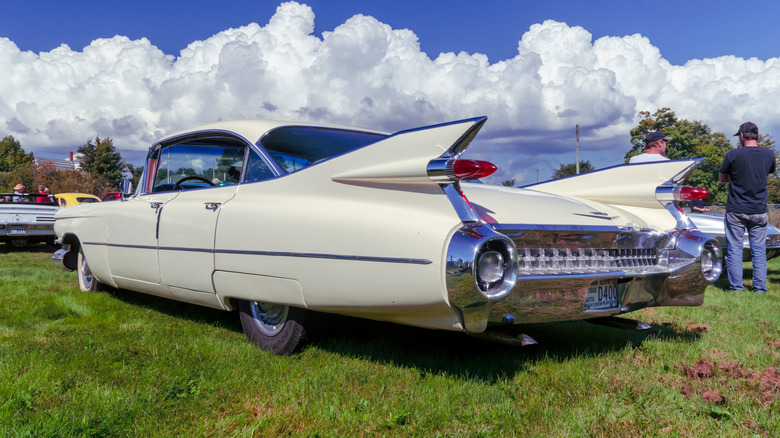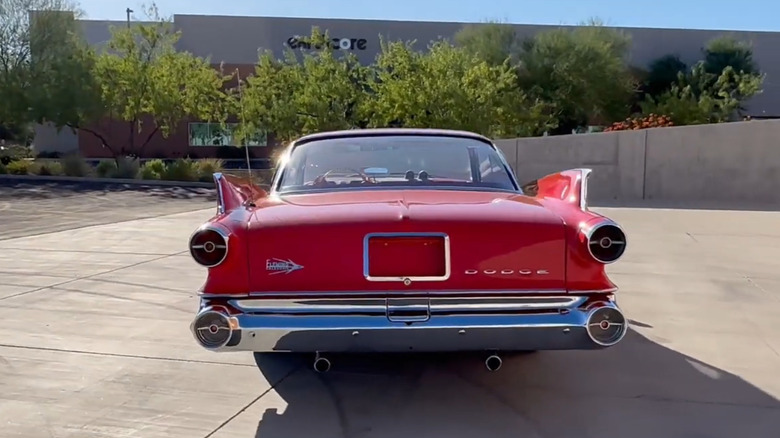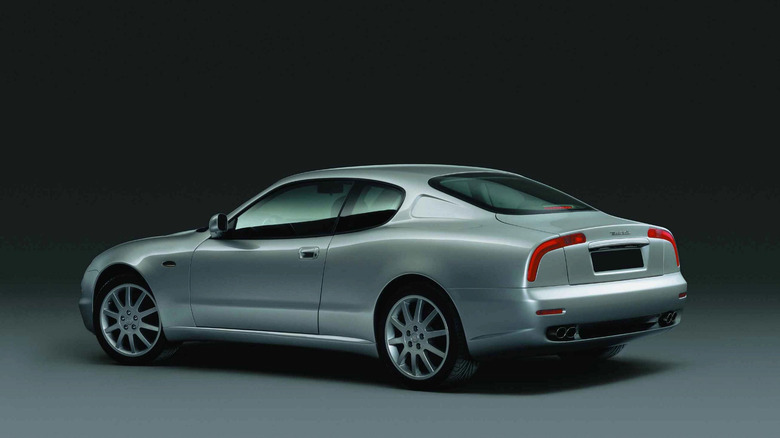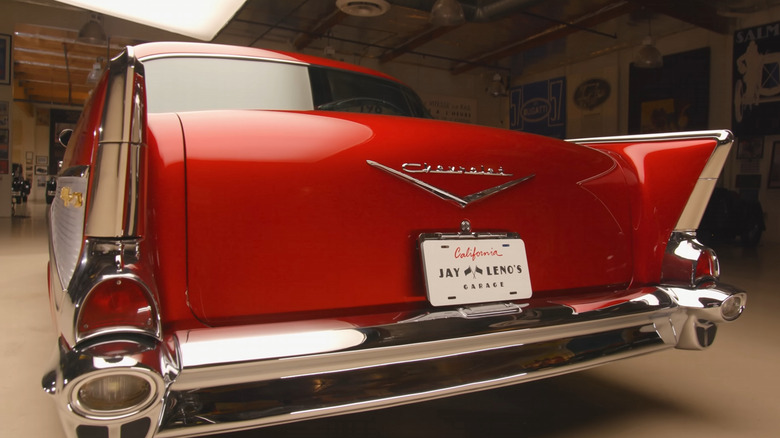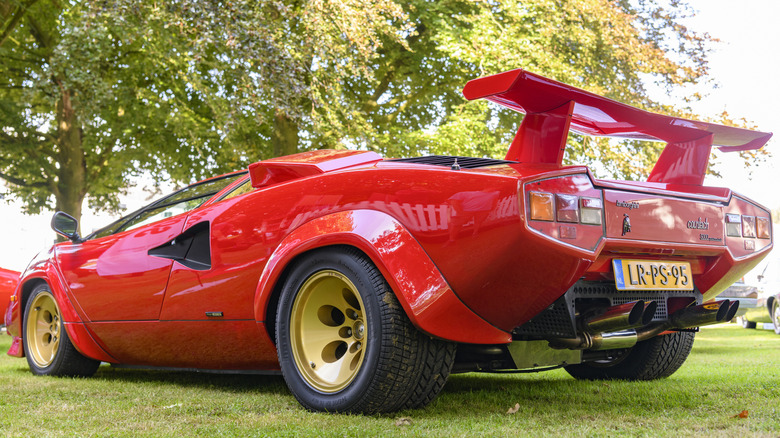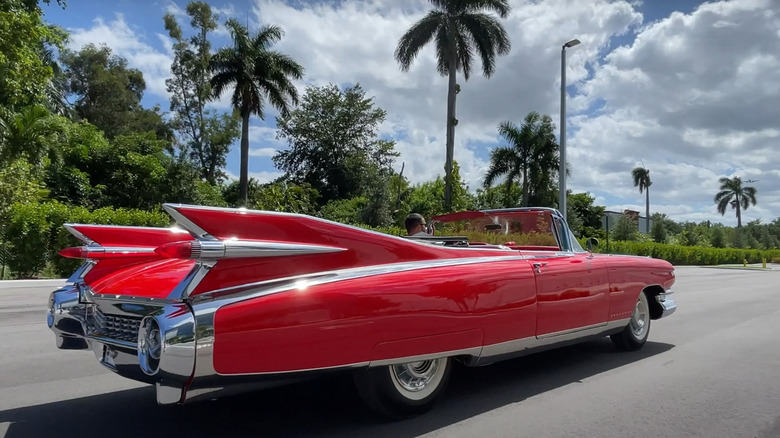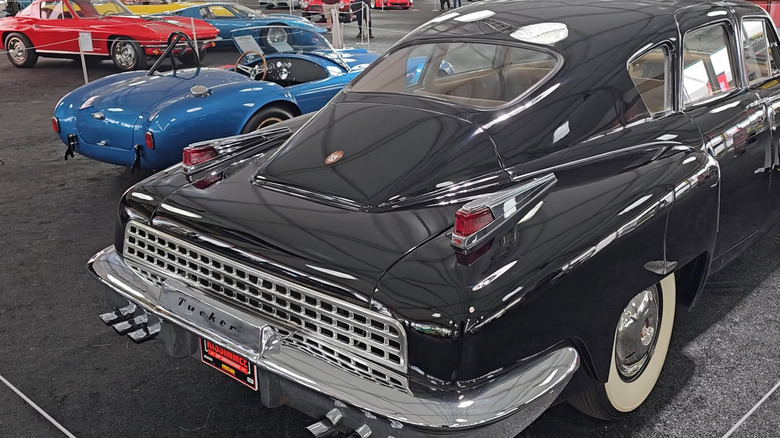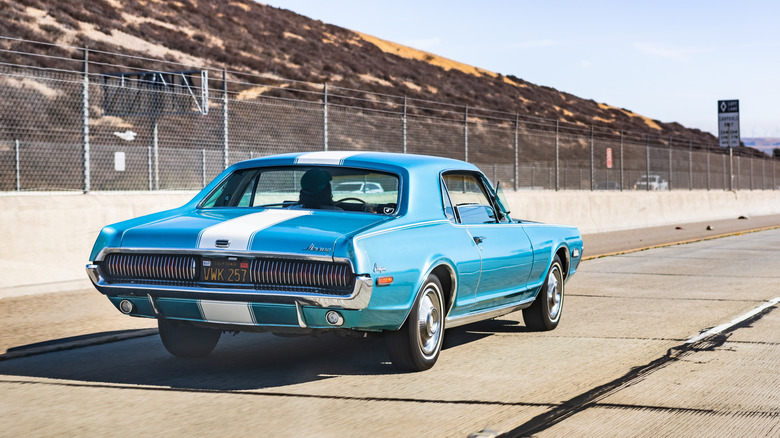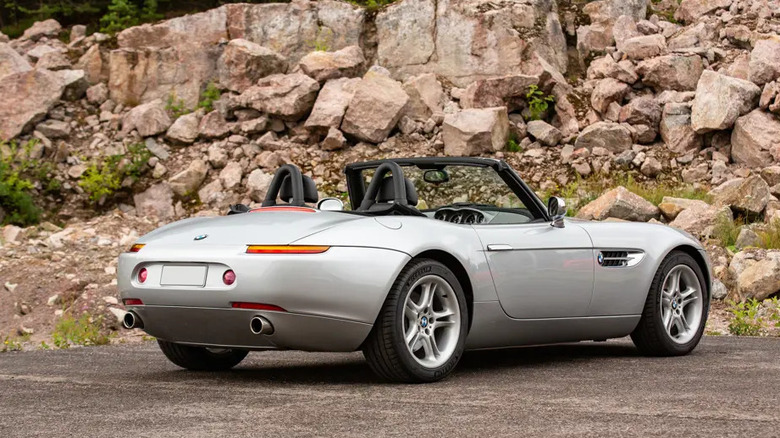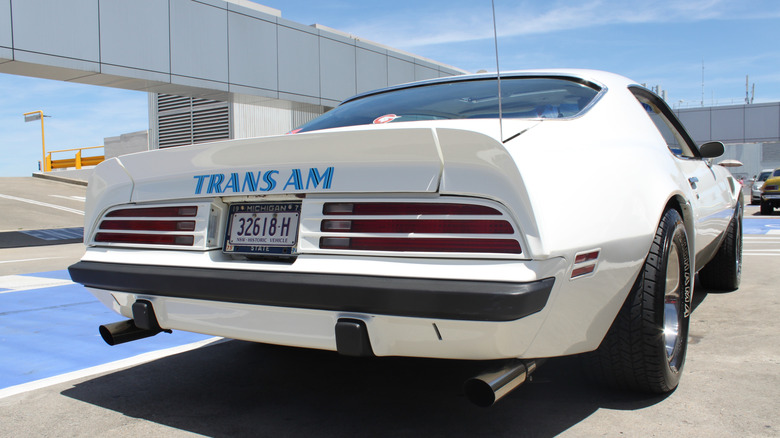10 Classic Cars With Cool Tail Lights
Before we jump in, we'd like to define what exactly a "classic" car is — and in truth, there's no one answer. That said, American Collectors Insurance describes a classic car as being between "20 and 45 years old", with antique cars being mainly those made between 1919 and 1930, and "vintage" cars being those made after 1930, but older than 45 years. For the purposes of this article, we'll be clubbing both "vintage" and "classic" cars together to make our list.
Also, we'd like to limit the definition of "cool tail lights" to ones that look funky or make a statement. For example, the tail lights on a McLaren F1 come straight from the back of a Bova Futura bus, without any modifications — that's pretty cool — but in terms of looks, they're pretty bog standard, so they don't make our list. Similarly, the Ford GT40 has the same tail light unit as the French Simca 1000, which is pretty interesting when you think about it, but the units are nothing special to look at; hence, they too do not make our list. You can rest assured that all the cars on this list have not just cool, but memorable tail lights. Here are ten of them:
1960 Dodge Polara
The Dodge Polara was launched to the public in 1960 and was instantly a recognizable car, with its truncated tailfins, massive front grill, chrome-plated everything, and one-piece unibody construction — a real innovation for the time. The Polara was designed to mimic an airplane, hence the fins, frills, and cockpit-inspired dashboard, which also happened to house an in-dash record player that could work with a maximum of 14 records at a time, translating to roughly two hours of playback. The tail lights on the Mark I Polara are really statement pieces that look like the back of a jet engine, keeping in line with the whole airplane theme that the car follows, and there are four of them in total.
Two of the tail light units are tinted red, located right behind the tailfins, and the other two, located on either side of the rear bumper, are clear units. When launched, the Mark 1 Polara was available in five main variants: a convertible, a pillared sedan, a two-door hardtop coupe, and a four-door hardtop sedan. In addition, it came with a grand total of 20 different body styles as well as two different wheelbase lengths. Power for the first-generation 1960 Dodge Polara came from a 383 cubic-inch (6,276 cc) Ram-Fire V8 that produced 325 hp and 420 lb-ft of torque, paired to a manual three-speed transmission. It was the typical American dream car: decently high horsepower, RWD only, and striking good looks — what more could anyone want?
1998 Maserati 3200GT
The next car on our list is not just among the greatest Maseratis of all time, but also one of the greatest cars of all time, as far as we're concerned. It's called the Maserati 3200GT, and was a complete redesign and a return to roots moment for Maserati. It came with new, unique, boomerang-shaped droopy tail light units that were like tubes bent from the middle, and interestingly enough, these tail lights were the first LED units ever to be fitted to a production car. Debuting in 1998, the 3200GT was the show-stopper, curtain call model for Maserati's biturbo era vehicles, and came with a heavily modified and upgraded V8 engine that was also used in the Quattroporte IV and the Maserati Shamal.
This fairly small, 3,217 cc engine produced a not-insignificant 370 hp. It was mated to either a four-speed automatic gearbox or the rather engaging six-speed ZF transmission, which made you feel like you were back driving an actual grand touring car from yesteryear. The 3200GT, equipped with a six-speed ZF transmission, was produced from 1998 to 2002. The automatic four-speed transmission was available from 2002 to 2007. Today, Maserati is among the many brands owned by Stellantis, and we're unlikely to see a revival like this again, given Stellantis' history of playing it safe, which is all the more reason why the 3200GT is on our list.
1957 Mk ii Chevrolet Bel Air
Next up is easily one of the most recognizable cars from America, representing everything that the 1950s were about: flamboyance, flair, and a definite look-at-me vibe. To that end, we'd actually say that the tail lights on the Mark II Bel Air are actually among the least noticeable parts on the car — see the massive flared tail fins and whitewall tires on chrome wheels — but they're pretty unique units. The tail lights are split into three distinct sections, with the topmost half-moon-shaped one being the most important, as it serves as the brake light and is thus tinted red.
The middle unit is oval and has no tinting, and was actually a rear reverse light that helped you see where you were going when backing up, and also indicated to drivers behind you that you were in reverse gear. The bottom housing, as far as we can tell, is purely aesthetic with no actual light units inside it. This tail light configuration was available only on the Mk II generation Bel Airs made in 1957, as Chevy changed the design in 1958. Another notable fact about the '57 Bel air is that it was only the second Chevrolet since the end of the First World War to have a V8 engine, getting fitted with the 283 cubic inch (3,900 cc), 220 hp small block unit even before the famous C1, C2 and C3 Corvettes — that would eventually be driven by several NASA astronauts.
1974 Lamborghini Countach
We can't have a classic car list without representation from our friends across the pond now, can we? The candidate is the Lamborghini Countach and its candy-bar tail lights, which celebrated their 50th birthday in 2021. To commemorate the Countach's 50th anniversary, Lamborghini came out with the Countach LPI 800-4, which was as radical a design in 2021 as the original Countach was in 1971. Anyway, back to our original Countach — the car that was probably on the bedroom wall of every supercar enthusiast back in the day — and its tail lights. Situated right below the aerodynamically useless rear wing (yes, the rear wing on the Countach is purely aesthetic), the outer lights were tinted orange as they were turn signals, the middle lights were tinted red as they were brake lights, and the inner lights were half-tinted red, with reflectors at the bottom since they were rear backup lights.
Overall, it's a pretty interesting look, even if it isn't the original intended design — the Countach LP500 prototype had a radically different set of tail lights — but nonetheless, pretty cool. Power for the production Countach models came from Lamborghini's flagship V12 engine, which at the time displaced 3.9 liters (3,929 cc) making 375 hp and 368 lb-ft of torque, paired with a five-speed automatic gearbox. The setup could rocket the Countach from standing to 100 kph (62.1 mph) in 5.4 seconds, which actually put it among the fastest Lamborghinis ever made at the time.
1959 Cadillac Eldorado Biarritz
One of the most iconic cars of all time, the Cadillac Eldorado is the next item on our list of classic cars with cool tail lights. Specifically, we'd like to include the fourth-generation Mk V, also called the Eldorado Biarritz, that was produced between 1959 and 1960, before getting a major redesign in 1961. This fourth-generation Eldorado had some of the most unique styling ever seen in a car and was one of those models that would get attention wherever it went. The 1950s were a decade of excess, and the Eldorado was nothing less than a tribute to that excess and extravagance.
People had more money to spend, and more desire to show off than ever, and that's what this car capitalized on — and very well at that. The tail lights are dual, rocket-shaped bulbs in each unit, mounted near the top of the rather large rear tail fin. At the bottom of said tail fin was a single-unit reverse light with chrome accents, and a "V" shaped line running across it from left to right, which kind of makes the reverse lamp look like a distorted Mazda logo — yes, that's the best definition we can give. Powering this massive land yacht was a 6,391 cc V8 making 345 hp, paired to a four-speed auto gearbox — plenty of power for cruising. Today, some Eldorado Biarritz models can sell for north of $120,000, particularly those that have been restored.
1948 Tucker 48
The man who made this rolling work of art, Preston Tucker, started his journey at Cadillac Engineering, not as a glamorous engineer, but as a lowly office boy. Later in his career, he would also work on the manufacturing line at Ford, and eventually, he would make a name for himself in Automotive sales, where he would become regional management at Pierce-Arrow, around the time when he would team up with another engineer to make the four-wheel-drive Indy 500 race cars for Ford — from 1935 onwards. Around that time, the Second World War began to loom, so Tucker decided to make a car that could be used as a scout vehicle, and almost closed a deal with the Netherlands — but the Germans overran the country.
It would be produced after the war ended, in 1948, and production would last only a year, with the prototype getting all independent suspension, disk brakes on every wheel, and a gargantuan 9,652 cc six-cylinder engine, though the production variant got a more tame 166 hp, 372 lb-ft 5,473 cc engine. The design was truly resplendent, with particular focus given to the back, complete with chrome grill and mini-fin tail lights, which, even in the flamboyant design theme of the time, looked like something out of a sci-fi movie. Unfortunately, only 51 units of this super cool car were made before the company declared bankruptcy, and today, a Tucker 48 won't leave you much change from $2 million.
1967 Mercury Cougar
The 1967 Mercury Cougar is what we'd like to introduce you to next, featuring one of the coolest tail light designs of any car, ever. The tail lights are two massive units from the 1956-generation Ford Thunderbirds, each more than a foot long, covered with what we can only describe as prison bars from top to bottom, evenly spaced. A likely benefit of this design was probably impact protection; absolutely nothing was reaching the lens of the lights, which, when illuminated, undoubtedly had a very unique glow pattern. Speaking of design, anyone with an interest in cars will immediately notice that the car looks oddly familiar — and that's because it is based on the Ford Mustang.
In terms of engines, customers were offered a 4,735 cc engine that produced either 200 hp or 225 hp, paired with a three-speed manual transmission; However, a four-speed automatic transmission was also available. When new, the base MSRP for the Cougar was just $2,851 ($27,350 today), making it only slightly more expensive than the Ford Mustang which it was a derivative of, though a more luxurious version, called the XR7, had a base MSRP of $3,081, which is $29,550 today. The 1967 Cougar also just happened to be the most successful car ever made by Mercury, having sold over 150,890 units, and actually beat the Ford Thunderbird, Caddy Eldorado, and Chevy Corvette to win the Car of the Year award from Motor Trend.
2000 BMW Z8
One of the few European cars on our list is this, the BMW Z8, made by BMW between 1998 and 2003. The particular edition we'd like to draw your attention to is the one made in 2000, called the Millennium Edition Roadster, which, even today, looks like a car from the future. It was a "retro-modern" design, probably symbolic of the turn of the century. To that end, several parts of the car were unique and standout-ish at the time, and one of these parts were the slit tail lights — and were the only neon lights ever fitted to a BMW from the factory. The units themselves were very thin, and the actual brake lights were only about half the height of the entire assembly, and located in the bottom half of the housing.
The top half of the unit consisted of a very long turn indicator light, which, if it were on cars today, would certainly be made into a sequential indicator. However, you'd probably finish your turn before one light sequence was completed. The ones on the Z8 were quite long. Power came from the E39's 4.9-liter V8, making 400 hp and lb-ft of torque sent through a six-speed gearbox. There's not much more to be said about the Z8; It debuted in 1997, launched in 1999, and was used by James Bond in "The World Is Not Enough" — if it's good enough for Bond, it's good enough for the rest of us.
1974 Trans Am Firebird
Whenever any list is made about classic cars, there's usually a Firebird on it, and this list is no exception. The Trans Am Firebird received heavily updated tail lights for the 1974 model year, replacing the monolithic brick units of the previous generation Firebirds with three strips. This design choice would remain in place until the second-generation Firebird was updated for the last time in 1979. It can be said that the 1974 model year Firebird Trans Am was the last true statement muscle car made before automakers reacted to the gas crisis by building some of the worst cars ever made.
The Firebird was a beauty, having ditched the Coke bottle shape of previous models, and coming in four main styles: the regular base hardtop, Esprit, Formula, and the Trans Am, with prices starting from $3,335 ($32,000 today) for the base, all the way up to $4,446 ($42,650 today) for the Trans Am. Even the base models were loaded with features, including an engine-turned dashboard, dual exhausts, bucket seats, heavy-duty transmission, a shaker hood, honeycomb wheels, rally gauges, a clock, and a tachometer — all of which were standard. However, the best engine was, of course, the legendary 455 Super Duty V8 that made 290 hp, though this was a $700 option — the standard power unit was a 290 hp V8.
1962 — 1966 Ford Cortina Mk 1
Last up: the Ford Cortina, not to be confused with the performant Lotus Cortina, which was developed for circuit racing and racked up several motorsport wins over the years. Manufactured over two decades, from 1962 to 1982, with the Mk1 running from '62 to '66, the Ford Cortina sold millions upon millions of units across its production cycle, quickly becoming one of the most popular British cars ever made. After releasing the Mk 1 Cortina in 1962, a more sporty GT version arrived in 1963, and that's the one we want to present here, with its three-section pizza-like tail lights that were very similar to a certain 2002 BMW.
Also the same year — 1963, Ford of Britain also launched the Cortina Mk1 Estate and Cortina Mk1 Super, each with an upgraded albeit different set of features. Coming back to the Mk1 GT trim though, as far as a sports car goes, its performance was quite mediocre, even for the time, with a 1.5-liter inline four-cylinder engine paired to a four-speed manual gearbox — a setup that made 59.5 hp, 97 lb-ft of torque, a top speed of 95 mph, and a leisurely 0-60 mph time of 19.8 seconds. It is truly one of the most versatile cars ever made — you could get it as a wagon, as a rally car, a four-door, a two-door, and lots more other variants in between. And that's it — those were ten classic cars from this century and the last that have really cool tail lights — and now you have that much more car knowledge.
